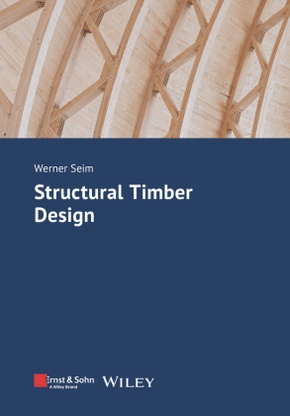| Verlag | Ernst & Sohn |
| Auflage | 2024 |
| Seiten | 394 |
| Format | 17,1 x 2,0 x 24,6 cm |
| Gewicht | 794 g |
| Artikeltyp | Englisches Buch |
| ISBN-10 | 3433034044 |
| EAN | 9783433034040 |
| Bestell-Nr | 43303404A |
Der Holzbau ist seit einigen Jahren einer der innovativsten Bereiche des Bauwesens. Die Geschwindigkeit, mit der neue Produkte in die Praxis eingeführt werden, ist im Vergleich zu anderen Baustoffen fast atemberaubend. So gewinnt der Holzbau im Gewerbe- und Hallenbau, aber auch im mehrgeschossigen Wohn- und Bürobau kontinuierlich an Marktanteil.
Dieses Buch vermittelt wesentliche Kenntnisse und Fertigkeiten, die für den Entwurf, die Bemessung und die Konstruktion von Holzkonstruktionen für typische Bauwerke erforderlich sind. Besonderes Augenmerk wird auf die spezifischen Eigenschaften von Holz und Holzwerkstoffen im Vergleich zu anderen Baustoffen gelegt. Dies betrifft die zahlreichen Vorteile, wie z. B. das vergleichsweise geringe Gewicht, die gute Verarbeitbarkeit des Hochleistungswerkstoffs und die große Vielfalt an Montagetechniken, aber auch die Herausforderungen, die sich aus der Materialanisotropie und aus der Anfälligkeit für natürliche Schädlinge ergeben.
In jedem Kapitel werden zunächst die wesentlichen Phänomene erläutert und erst danach in Zusammenhang mit Regelwerken gebracht. Damit soll das Grundverständnis für die Zusammenhänge und Abhängigkeiten im Holzbau unterstützt werden, das die wesentliche Grundlage für kreative Ingenieurarbeit ist.
Timber construction has been one of the most innovative areas of the building industry for several years. The speed with which new products are introduced into practical application is almost breathtaking compared to the other construction materials in the building industry. As a result, timber construction is continuously increasing its market share in commercial buildings and hall structures, and even in multi-storey construction for residential and office buildings.
This book provides essential knowledge and skills required for the design, detailing, and construction of timber structures for typical building structures. Special emphasis is placed on the specific features of timber and wood-based materials compared to other construction materials. This concerns the numerous advantages, as e.g. the comparatively low weight, the good workability of the high-performance material and the large variety of assembling technologies, but also the challenges resulting from the material anisotropy and from the susceptibility to natural pests.
In each chapter the essential phenomena are explained first and then brought into connection with code regulations. This aims to support the basic understanding of the interrelations and dependencies in timber engineering, which is the fundamental basis of creative engineering.

